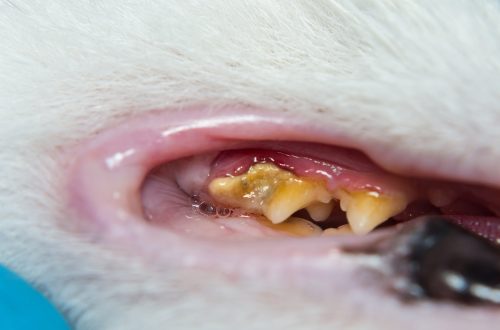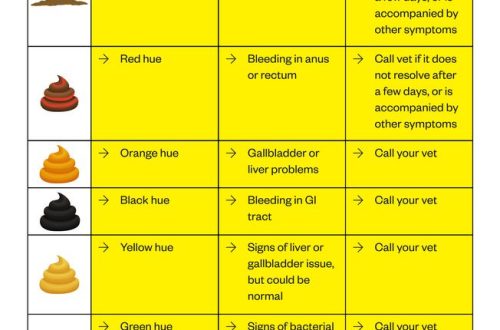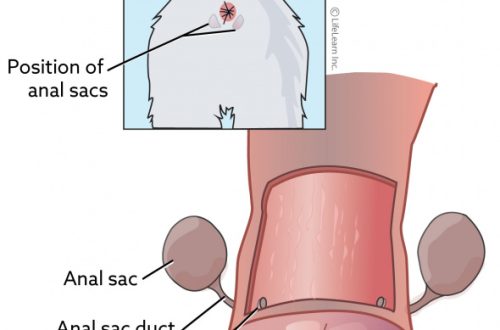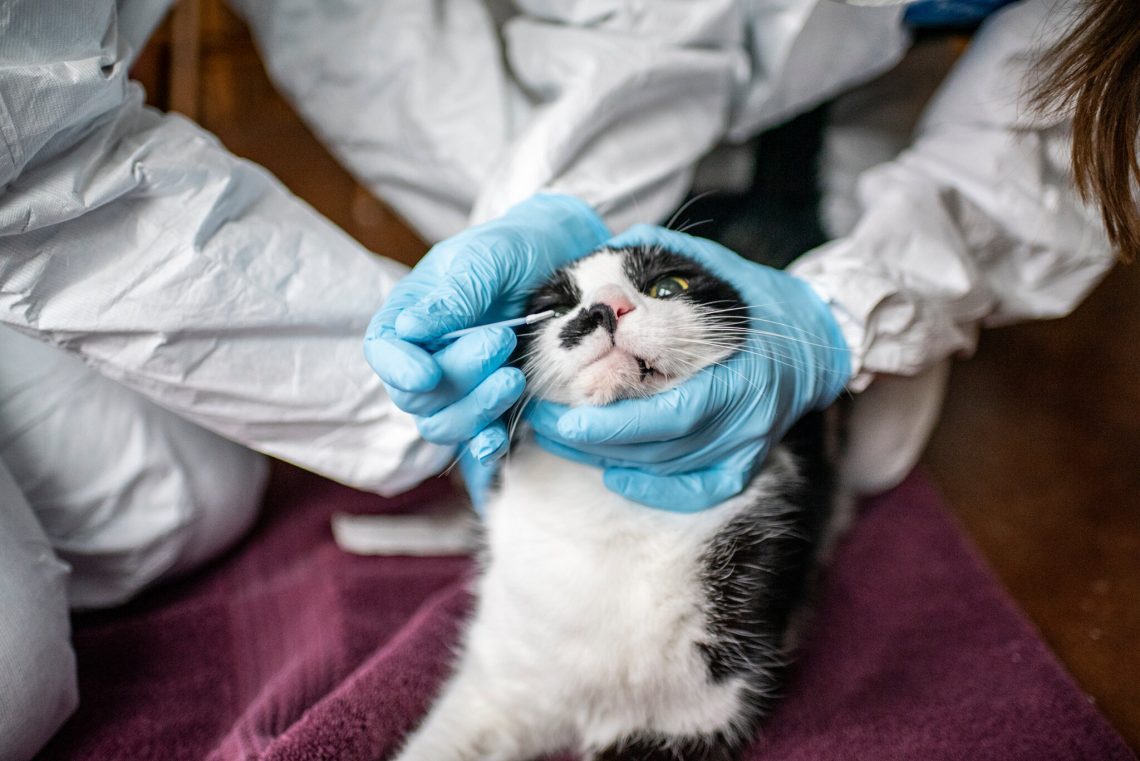
Coronavirus in cats: treatment, symptoms, danger to humans
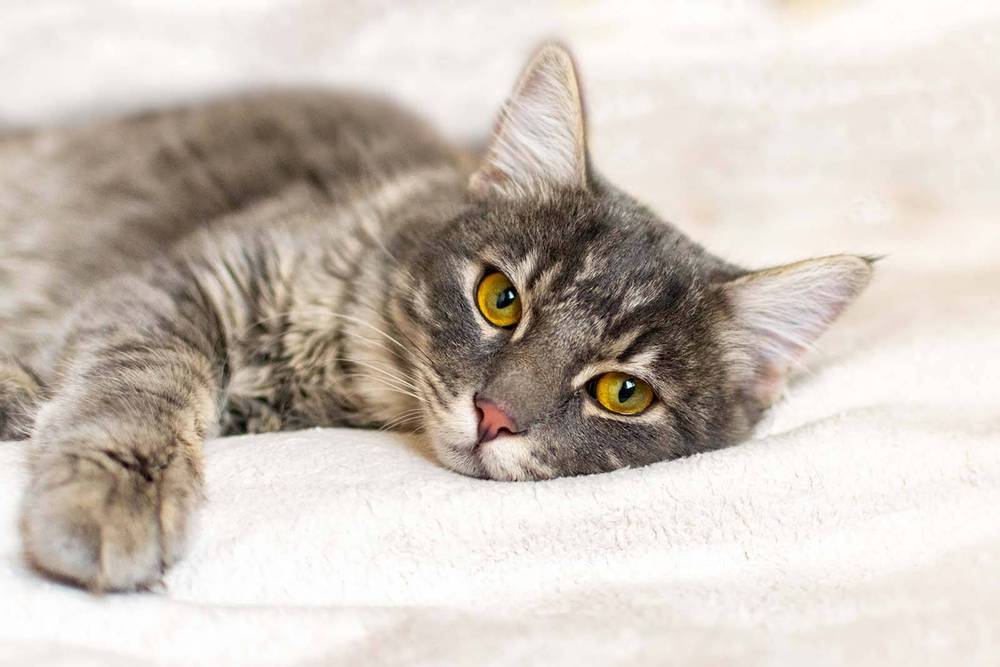
Contents
- Coronavirus in cats: the essentials
- Can cats get coronavirus?
- Symptoms of coronavirus in cats
- How is coronavirus transmitted in cats?
- Diagnostics
- Forms of manifestation
- Treatment of coronavirus in cats
- Coronavirus in kittens
- Care for a sick animal
- Prevention
- Can a person get infected from a cat?
- Can a cat get infected from a human?
Coronavirus is an infectious disease that many cats have.
In most cases, coronavirus does not have any clinical symptoms and is hidden.
The main symptoms of coronavirus gastroenteritis include diarrhea, sometimes vomiting is possible, the condition of the animal is not life-threatening.
In some cases, a common coronavirus mutates into an extremely dangerous disease in cats – infectious peritonitis (hepatitis). This disease without specific treatment is fatal.
Feline coronavirus (FCoV) and human coronavirus (Covid-19) are two different viruses that have nothing in common except for their structure.
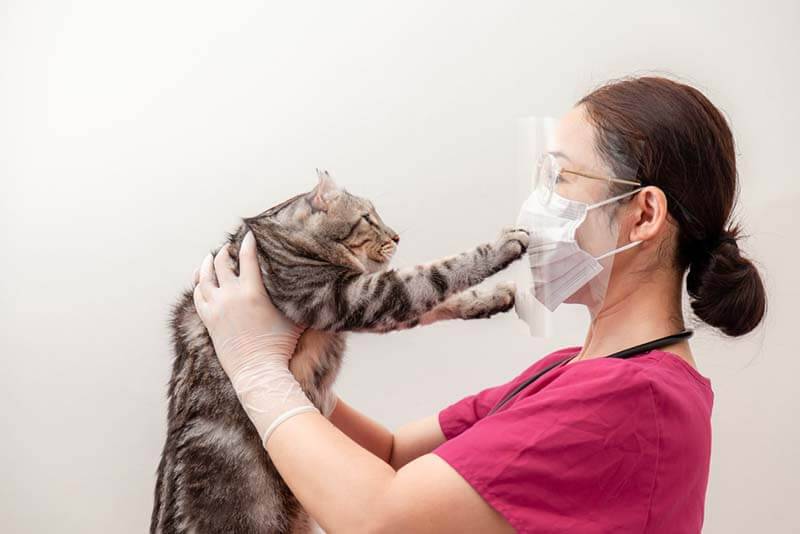
Cats, like all living organisms, are exposed to viruses of various types and families, including coronaviruses. Coronavirus infection (FCoV) is quite common in indoor and outdoor cats. Coronavirus has become widespread in shelters and nurseries, where this infection can be detected in 60-80% of cats that are carriers of the virus. This virus has been known in nature for several decades. With regard to the recent human coronavirus (Covid-19), there is still no convincing evidence that domestic cats or dogs can become infected with this virus. The study of the possibility of infection of pets with this virus began with the story of one Spitz from Hong Kong, whose owners were ill with covid. Covid-19 was isolated from the mucous membranes of the dog, and a few days after isolation, she died. But the Spitz at that time was 17 years old (with an average life expectancy of 15 years). No further convincing data have been obtained on the possibility of Covid-19 disease in animals.
Types
Coronavirus in cats is the causative agent of two completely different diseases – coronavirus gastroenteritis and infectious peritonitis (another name is infectious hepatitis) of cats. The first disease is caused by the FCoV virus itself and occurs in most cats, both indoor and outdoor, as well as in many other members of the feline family. The second disease occurs due to mutations of the FCoV virus, after which it is already commonly called FIPV. Mutations can be caused by many factors, most often it is severe stress, various third-party diseases, and immunodeficiency. Mutations can occur both a few days after infection with a coronavirus, and a few years later. A cat with FCoV does not necessarily have to develop FIPV, the exact mechanism of this process is still unknown.
If a cat develops a chronic coronavirus infection in the form of gastroenteritis, in most cases the symptoms will be limited to manifestations of mild to moderate inflammation of the gastrointestinal tract. The virus infects the cells of the small intestine, from which certain clinical signs appear. Dilution of the stool can be noted, impurities of blood or mucus in the feces are often visible, and occasionally vomiting occurs. You can recognize weight loss, loss of appetite. In most cases, the symptoms do not cause serious concern. With more vivid symptoms, there is a suspicion of the presence of secondary diseases, a bacterial infection, and immunodeficiency. In this case, further research is needed.
Symptoms of coronavirus infection in cats in the form of viral peritonitis are more diverse. Most often they include lethargy and apathy, the pet becomes uninterested in what is happening around him. There is a deterioration in the quality of wool, tangles may appear more often, dandruff occurs. Gradually, the appetite begins to decrease, at first the cat can refuse only the usual food, without neglecting something tasty, but over time, the appetite disappears altogether. Against the background of refusal of food, the animal loses weight, becomes emaciated and dehydrated. The pet begins to sleep more and stay awake very little, may begin to look for darker places to hide. Often there is an increase in temperature, the increase can be constant or spasmodic. If the disease is accompanied by liver damage, yellowness of the mucous membranes, the whites of the eyes and even the skin can be noted.
If the nervous system is affected, gait disturbance, tremor, convulsions will be noted. With an effusion form, there will be a noticeable increase in the volume of the abdomen, the abdomen becomes spherical. If fluid accumulates in the chest cavity, breathing problems may occur. Often there are changes in the eye area: lacrimation, discoloration of the iris, clouding of the cornea and lens.
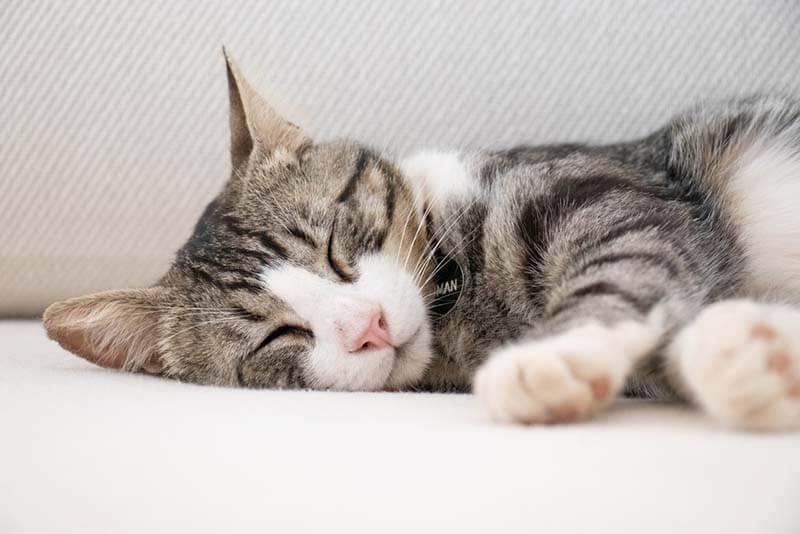
There are three main routes of transmission of the virus:
Alimentary;
Vertical;
Sexual.
With the alimentary route, infection with the virus occurs through infected foods and water, most often when a cat licks its fur and paws. With this method of infection, the virus goes through several stages. First, the virus leaves the body of a sick cat through the digestive tract into the environment. Then, while in the environment, the virus falls into a state of suspended animation and is able to exist in this form for several days. If it is exposed to high temperatures, ultraviolet rays, or disinfectants, the virus dies, and the cycle is interrupted at this point.
Once in water, on food or on the body of a cat, it is soon swallowed and begins its life activity. The coronavirus primarily attacks the intestinal cells in cats, invades them and does not manifest itself for a long time. At this time, the cat may not show any symptoms of illness, but is already able to excrete the virus and infect other animals. In some cases, the virus infects the palatine tonsils, in which case its release also occurs with saliva. There are periodic uncomplicated diarrhea, rare vomiting. Both lifelong virus carrying and spontaneous elimination (exit) of the virus from the body are possible. Coronavirus in cats is transmitted only between members of the cat family. For example, a dog living with a sick cat is completely safe.
The vertical route of transmission involves the transmission of the virus from mother to fetus during fetal development. The virus is able to cross the placental barrier and infect kittens.
Sexual transmission occurs when a healthy cat is mated with a virus-carrying cat through body fluids.
In a small proportion of cats (less than 10%), the coronavirus mutates into a more dangerous form of the virus (a form of infectious peritonitis). It is impossible to get infected with this disease, that is, a cat with infectious peritonitis is not infectious for other pets living together. The main factors contributing to the mutation are: stress, breed predisposition (Abyssinian, Australian Smoky, Bengal, Burmese, Burmese, British Shorthair, Himalayan, Ragdoll, Rex and Scottish), the age of the animal is up to a year and more than 10 years. Immunocompromised animals are more likely to get the mutated virus. Immunocompromised cats are less likely to develop infection.
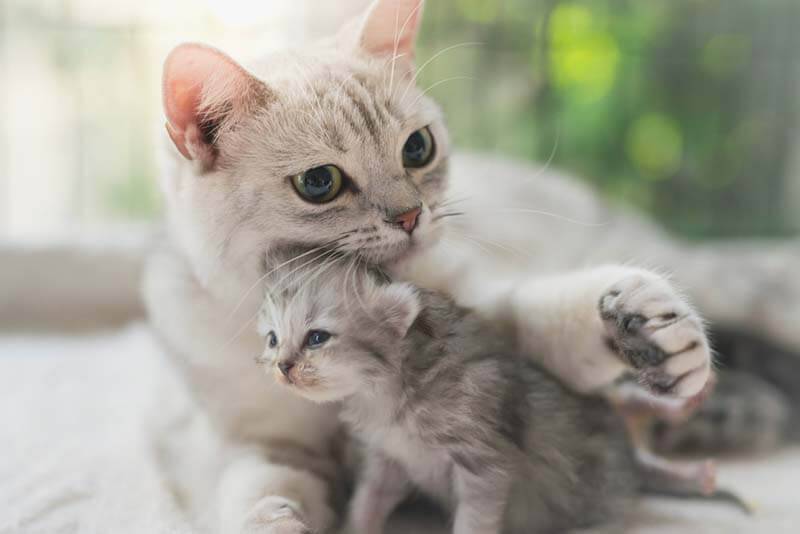
Diagnostics
Diagnosis of feline coronavirus should be based on both history and examination data, as well as laboratory data. To confirm coronavirus gastroenteritis, PCR studies of feces or rectal washings are used. This test may be false negative if the amount of virus in the sample obtained is not sufficient to be detected by the analyzer.
Various methods are used to confirm infectious peritonitis. If the coronavirus manifests itself in a cat in a wet form, the study of exudative fluid is considered the most informative. The liquid most often looks like a viscous, yellow, sometimes it is a substance with impurities of flakes. Its cytological analysis is carried out, due to which the cellular composition of the fluid is revealed, it is also possible to exclude the tumor process. In the cellular composition, neutrophils and macrophages are most often determined, lymphocytes are less common. According to the biochemical study of the liquid, the amount of protein can be determined. A high amount of protein would rather indicate an infectious cause of the effusion. A low albumin to globulin ratio would also be more likely to indicate infectious peritonitis. A PCR study of the exudate fluid will most accurately help indicate this disease. The accuracy of the method is not less than 95%.
If a dry form is suspected, other methods of confirmation are used. A clinical blood test revealed a slight increase in the number of leukocytes and neutrophils, a decrease in lymphocytes. The opposite picture is also possible with a reduced number of leukocytes. Anemia is often detected, in advanced cases anemia will be severe. In the biochemical analysis of blood, an increase in the level of total protein, a decrease in the ratio of albumin / globulin can be noted. Often the liver is plunged into the process, in which case an increase in bilirubin and transaminases can be detected in the blood. In the analysis of urine, bilirubin can also be detected. PCR is often used for confirmation. In the dry form, a fine-needle biopsy is used to take tissue from the affected lymph node. Material from granuloma tissues is obtained intraoperatively. If there are symptoms of damage to the central nervous system, cerebrospinal fluid is taken. With confirmed uveitis, an examination of the fluid from the anterior chamber of the eye is performed.
The determination of antibodies in the blood by enzyme immunoassay (ELISA) is not the method of choice for confirming the diagnosis. The detection of antibodies in the blood of a cat indicates only its contact with this virus. That is, a cat can both actively get sick at the moment, and be already healthy. Also, this method cannot distinguish between coronavirus gastroenteritis and infectious peritonitis. A high antibody titer and associated clinical signs would be more likely to indicate infectious peritonitis. But low and medium antibody titer does not exclude the presence of this disease. A seronegative result for coronavirus will also be in the terminal stage of the disease in a cat.
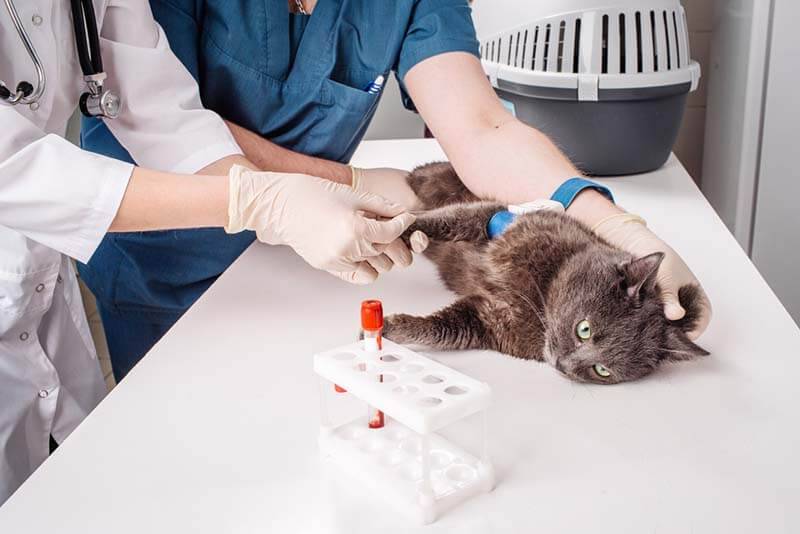
Forms of manifestation
According to the severity of the course, the coronavirus is divided as follows:
Asymptomatic virus carrier. It occurs in most cases of coronavirus in cats.
Chronic or subacute course. Appears in the form of signs characteristic of gastroenteritis. Periodic vomiting and diarrhea are possible, sometimes with an admixture of blood. Dehydration does not occur, the condition does not threaten life. Both complete recovery and the transition of the disease to a more severe form are possible.
Acute flow. It is mainly observed with the development of infectious peritonitis in a cat. With this form, all internal organs are involved in the process. The virus causes vasculitis, that is, inflammation of all blood vessels inside the body. In the vessels, porosity increases, that is, “pores open”, through which free fluid exits.
Feline infectious peritonitis can occur in two forms:
Wet
With this form, free fluid is formed in the abdominal and / or chest cavity. Fluid may also appear in the pericardium (heart sac).
Dry
It is characterized by the formation of nodules on the internal organs. These are the so-called granulomatous inflammatory foci that affect tissues and impair the performance of organs.
The development of infectious peritonitis in various forms is due to various mechanisms. Cells of the immune system, or rather macrophages, begin to attack the virus, trying to protect the body. Macrophages stick to the surface of the virus, but cannot defeat it. The accumulation of cells and viruses leads to the formation of globules that fill the blood capillaries. Then there are two options:
The permeability of the walls of the capillaries increases, through them the liquid part of the blood begins to seep into the cavity. Thus, an effusion form arises.
The blood flow slows down, as a result of which there is a decrease in the blood supply to all organs and tissues, gradually the organs begin to fail. This is how the dry form proceeds.
Treatment of a coronavirus infection in a cat in the form of gastroenteritis is usually not required. If the symptoms (vomiting, diarrhea) are severe, symptomatic therapy will be required. Enterosorbents, gastroprotectors, antiemetics can be prescribed. Most antiviral drugs (various interferons) have no proven efficacy and are not used for treatment. Cats with good immunity cope with the virus on their own. In complicated cases, antibacterial drugs can be added to therapy to control the development of secondary microflora.
Treatment of feline infectious peritonitis has long been considered impossible. Diagnosed cats were euthanized in most cases because supportive care did little to improve their quality of life. To reduce inflammatory reactions, glucocorticosteroids were used, against their background one could even expect a decrease in the amount of fluid in the cavities, the return of appetite and activity in the cat. But these drugs had their own side effects, and the disease always had the same outcome in the end.
A few years ago, GS-441524 appeared on the market. This is a new generation drug aimed at the treatment of feline viral peritonitis. In 2019 in America, at a veterinary symposium, feline infectious peritonitis received the status of a curable disease. This drug has been successfully used to treat coronavirus in cats in many countries. There are a large number of brands that make GS-441524. The course of treatment is a full 84 days. The dosage for each animal is individual. It increases if the cat has concomitant diseases, such as immunodeficiency virus or feline leukemia virus. If the cat develops nervous phenomena (tremor, convulsions), the dosage will be even higher. The drug is very painful to administer, often the formation of ulcers on the skin at the injection site. The main two problems in its use are the lack of a license for open sale (the drug can only be bought on the gray market) and the high cost of a course of treatment (reaches several hundred thousand rubles). There are also no scientific studies on the use of this drug, since there are no statistics with a large number of animals in it. Many doctors may refuse to use this drug, and their fears are justified.
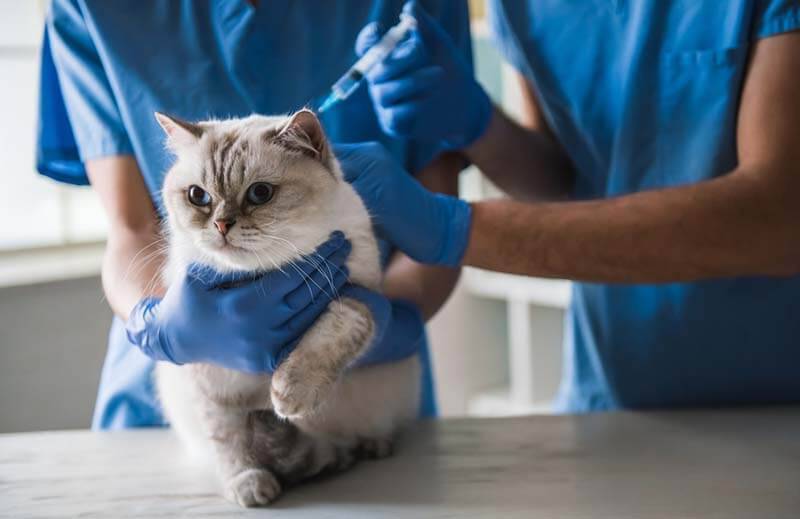
In a kitten, coronavirus can also occur both in the form of gastroenteritis and in the form of peritonitis. Diarrhea and vomiting are more dangerous for small kittens, as they are at higher risk of severe dehydration. In this case, you should not wait for recovery at home, you should immediately seek help from the clinic. It is highly likely that the kitten may need subcutaneous or intravenous drips to maintain fluid balance and replenish lost electrolytes.
Clinical signs of coronavirus in the form of infectious peritonitis in kittens after infection develop much more often than in adult cats. They also shed the virus in large quantities, meaning they are more likely to infect other cats. If the kitten has third-party diseases, including leukemia or immunodeficiency, then it will be extremely difficult to avoid the development of infectious peritonitis. Maternal antibodies usually end their protection at the age of 6-8 weeks of the kitten, after which the active development of the virus begins. Infectious peritonitis can develop as early as a few weeks after infection, although more often this interval is 6-18 months.
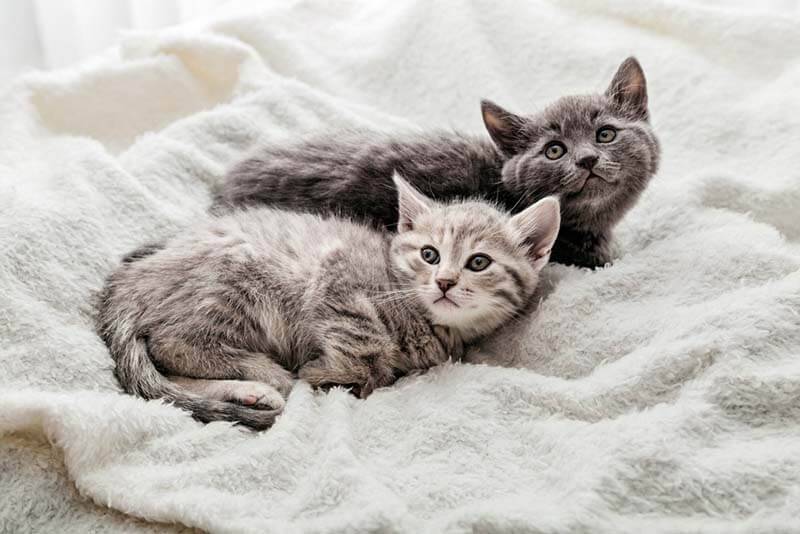
Care for a sick animal
Caring for a sick cat means, first of all, following all the recommendations of the attending physician. All drugs must be given strictly according to established recommendations. In case of deterioration of health, it is necessary to apply for a second appointment to adjust the treatment.
When used in treatment, GS-441524 will require constant monitoring of blood tests and abdominal ultrasound in order to ascertain the effectiveness of the treatment. Do not neglect these studies.
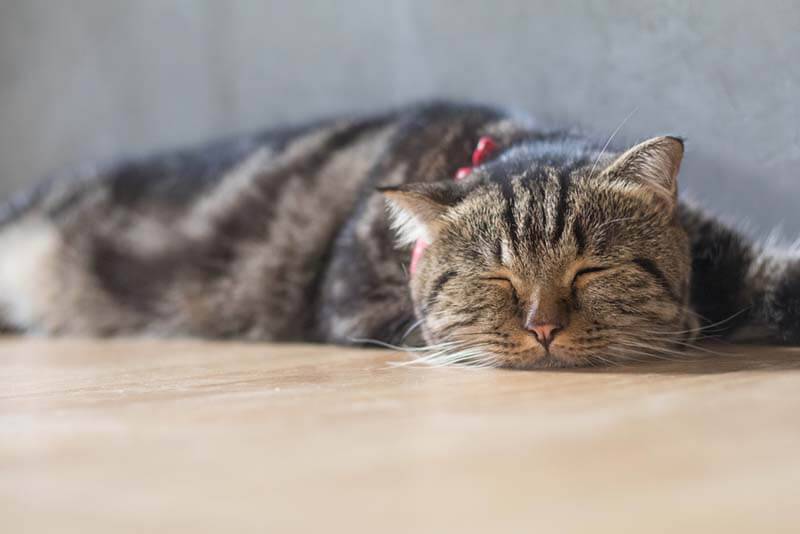
Prevention
Vaccination against coronavirus in cats has not yet been developed. There are some vaccines against FCoV, but their effectiveness has not justified itself, and they are not available for mass vaccination, the International Small Animal Veterinary Association has not included them in the list of basic or additional vaccines for cats.
The main preventive measures include the basic rules that must be observed in any situation. The cat should be provided with comfortable living conditions, clean water should always be in the public domain, the diet should be balanced for all nutrients. It is necessary to avoid crowded keeping of animals, try to provide everyone with an optimal area for living. All animals in the house should be treated prophylactically against internal and external parasites, annual vaccination can prevent the development of many infectious diseases. There is a vaccine against feline viral leukemia that is not included in the general vaccination plan, its use in free-roaming cats is highly recommended.
It is recommended to conduct an annual medical examination, including a general examination, laboratory tests such as blood and urine tests, and abdominal ultrasound. In case of signs of discomfort, you should immediately consult a doctor. If your cat or cat has symptoms consistent with the coronavirus, you should immediately contact the clinic and receive appropriate treatment. If a cat has already been diagnosed with coronavirus, it is necessary to minimize stressors for her in order to prevent the virus from mutating. Trays should be disinfected and cleaned regularly. The virus is not persistent in the environment, and most detergents are able to deactivate it.
Can a person get infected from a cat?
It is impossible to infect a person with a coronavirus from a cat, just as it is impossible to infect a dog, rabbit, hamster and other non-feline pets. This virus is able to live and multiply only in the conditions of the cat’s body. How coronavirus is transmitted in cats, we discussed in the appropriate section.
Can a cat get infected from a human?
It is possible to bring feline coronavirus from the street on your clothes or shoes. It is enough for a domestic cat to rub against the owner so that the virus gets on its coat, and then, when washed, enters the intestines. Often, infection of domestic cats occurs in this way.
As mentioned above, there are no convincing data on the possibility of infection of domestic animals with the Covid-19 virus. There are several cases in the world with the possible Covid-19 disease of cats from their owners, but such cases are rare, and they are not included in the general statistics. However, if you are currently sick, you should not neglect the rules of personal hygiene. The following recommendations should be followed:
During the illness, isolate yourself from others, including your cat. Ask someone you know to take care of your pet or put him in a pet hotel.
If isolation is not possible, do not kiss and hug the animal.
Do not let your pet eat from your plate.
Wash your hands before and after each contact with an animal, cleaning the tray, washing bowls.
Regularly disinfect trays, combs, and other cat care items with detergent.
If there is a need to show the pet to the doctor, it is worth entrusting it to another person. In some clinics, there is a service for taking an animal for treatment directly from home.
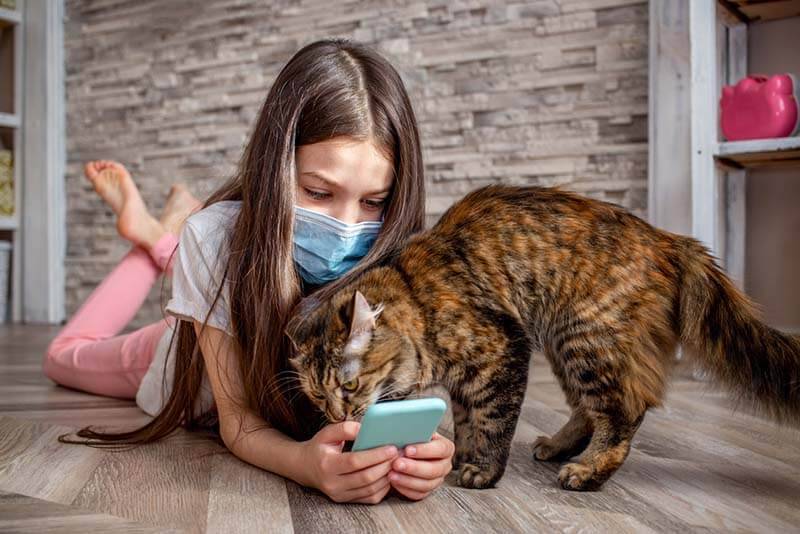
21 2021 June
Updated: July 9, 2021



